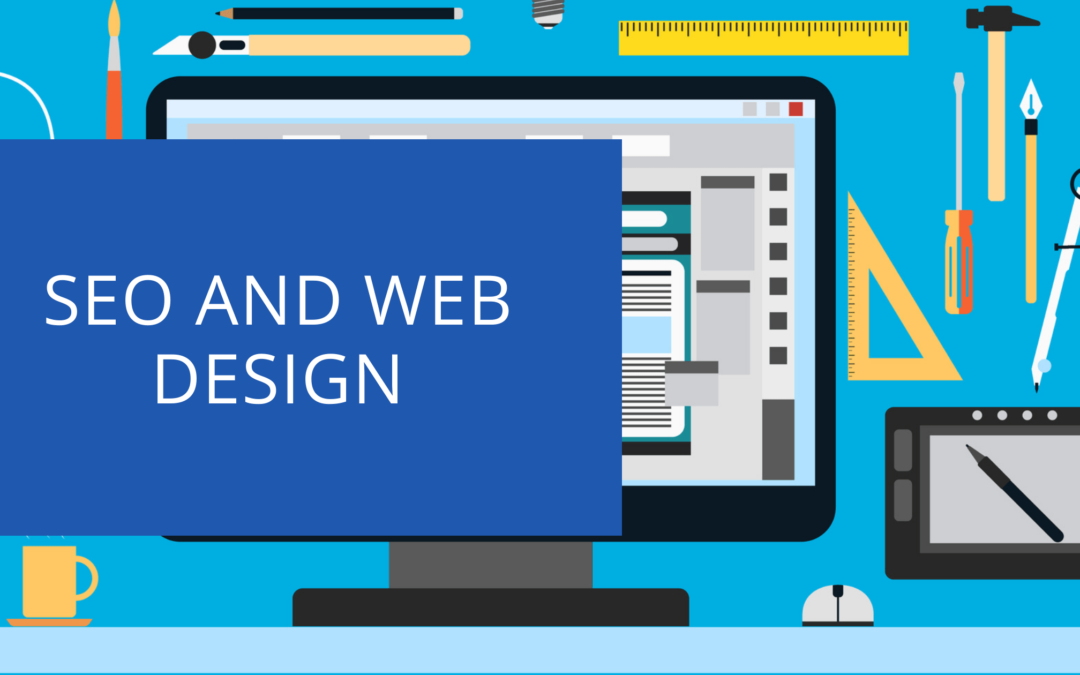There’s no question that SEO and web design are two important aspects of any online presence. However, they are often seen as two separate entities, with people believing that they don’t need to worry about one if they have the other in place.
This simply isn’t the case the two go together like bread and butter. In this article, we will take a look at how SEO and web design work together to create a well-optimised website.
Contents
What is SEO in web design?
SEO in web design is the process of optimising a website for search engines during all stages of the web design process. It involves planning or improving the site’s architecture, content, readability, and overall user experience to rank higher in SERPs (search engine results pages).
Why it is important to build websites with SEO in mind?
Why it is important to build websites with SEO in mind? Well, organic traffic accounts for a large percentage of website visits.
 According to recent studies, organic traffic now outranks paid traffic when it comes to driving leads and sales. This means that if you want your website to be successful, you need to ensure that it ranks high in SERPs. And the only way to do this is through effective SEO.
According to recent studies, organic traffic now outranks paid traffic when it comes to driving leads and sales. This means that if you want your website to be successful, you need to ensure that it ranks high in SERPs. And the only way to do this is through effective SEO.
You need a technically sound and strong foundation to build on for the best SEO results. Generally, SEO experts aren’t included during the website build or redesign process so a lot of these important factors can be missed.
SEO and Web Design Optimisation Factors
Mobile-Friendliness
One of the most important aspects of SEO web design is making sure that your website is mobile-friendly. This means that it will work well on phones, tablets, and other devices.
Google has recently announced that it will be giving preferential treatment to websites that are optimised for mobile devices. This means that if your website isn’t mobile-friendly, you could be losing out on a lot of traffic.
How can you make your website mobile-friendly? Well, there are a number of ways to do this, and it depends on the type of website you have. However, some common tips include using a responsive theme, keeping font sizes readable, and avoiding Flash content.
Website Speed
Another important factor that Google takes into account when ranking websites is website speed. In fact, they’ve even announced that page loading time will be a part of their mobile search rankings algorithm. This means that if your website is slow, you could be losing out on traffic and sales.
How can you improve your website’s speed? There are some things you can do, such as optimising images, reducing the size of your HTML files, and using a caching plugin.
Readability
Another important factor that Google takes into account when ranking websites is readability. This means that if your website is difficult to read, you could be losing out on traffic and sales.
How can you improve the readability of your website? One way to do this is by using shorter sentences and paragraphs, and by using simple, easy-to-read fonts.
Image Optimisation
 Images are an important part of any website, but they can also slow down your page loading time. This is why it’s important to optimise your images for SEO.
Images are an important part of any website, but they can also slow down your page loading time. This is why it’s important to optimise your images for SEO.
How can you optimise your images for SEO? You can do this by reducing the size of the file, adding keywords to the filename and alt text, and optimising the image for the web.
Site Architecture
Another important aspect of SEO web design is site architecture. This involves organising your website in a way that makes it easy for both users and search engines to navigate.
How can you improve your site architecture? One way to do this is by using a hierarchical structure, with clear and concise navigation menus.
User Experience
Finally, the last factor that Google takes into account when ranking websites is user experience. This means that if your website isn’t user-friendly, you could be losing out on traffic and sales.
How can you improve your website’s user experience? One way to do this is by using clear and concise text, easy-to-read fonts, and simple navigation menus.
The importance of good web design
Having a well-designed website is important for a number of reasons. Firstly, it can help to improve your website’s search engine ranking. Secondly, it can make your website look more professional and trustworthy. Thirdly, it can help to improve your website’s usability and user experience. Finally, good web design can also help to reduce your website’s loading time and increase conversions.
Elements of good web design
Several elements make up a good web design. These include:
- Mobile-friendliness: Your website should be easy to use on mobile devices, as more and more people are now accessing the internet via their smartphones and tablets.
- Website speed: Your website’s loading time is important, as no one wants to wait around for pages to load.
- Readability: The text on your website should be easy to read, with plenty of white space and short paragraphs.
- Image optimisation: All images on your website should be properly optimised so that they don’t slow down your page loading time.
- Navigation: The layout of your website should be logical and easy to navigate.
- User experience: Your website’s usability is key, as people will only stay on a website if it’s easy to use.
- Responsive Design: Your website should be responsive so that it looks good on all devices.
- CTA Buttons: Your website should have clear and concise call to action buttons so that visitors know what you want them to do.
- Colours: The colours on your website should be consistent with your branding and help to create a positive user experience.
- Fonts: The fonts on your website should also be consistent, and easy to read.
- High-quality images: All images on your website should be high quality and help to convey your message.
- Keep it simple: The best websites are the ones that keep things simple, with a clear layout and easy-to-use navigation.
SEO and Web Design FAQ
What is the difference between SEO and web design?
 SEO and web design are two very important aspects of website optimisation. SEO is the process of improving a website’s visibility in search engine results pages, while web design is the process of designing and building a website.
SEO and web design are two very important aspects of website optimisation. SEO is the process of improving a website’s visibility in search engine results pages, while web design is the process of designing and building a website.
What are the most important aspects of SEO web design?
The most important aspects of SEO web design are making sure your website is mobile-friendly, optimised for speed, readable and user-friendly.
How can I make my website mobile-friendly?
There are several ways to make your website mobile-friendly, and it depends on the type of website you have. However, some common tips include using a responsive theme, keeping font sizes readable, and avoiding Flash content.
How can I improve the speed of my website?
There are some things you can do to improve the speed of your website, such as optimising images, reducing the size of your HTML files, and using a caching plugin.
How can I improve the readability of my website?
One way to improve the readability of your website is by using shorter sentences and paragraphs, and by using simple, easy-to-read fonts.
How can I optimise my images for SEO?
You can optimise your images for SEO by reducing the size of the file, adding keywords to the filename and alt text, and optimising the image for the web.
How can I improve my site architecture?
One way to improve your site architecture is by using a hierarchical structure, with clear and concise navigation menus and implement breadcrumb navigation.
How does SEO work?
SEO is the process of optimising a website for visibility in search engine results pages. This involves improving the content, structure and metadata of a website to make it as relevant and useful as possible to users.
Conclusion
SEO and web design go hand in hand. To rank high in SERPs, your website needs to consider SEO at every stage of the web design process. There are several ways to achieve this, including optimising your website for speed, readability, images, and site architecture.
If you would like to learn more about our SEO and web design services, please don’t hesitate to get in touch. We would be happy to discuss your requirements and see how we can help you improve your website’s visibility in search engine results pages.

